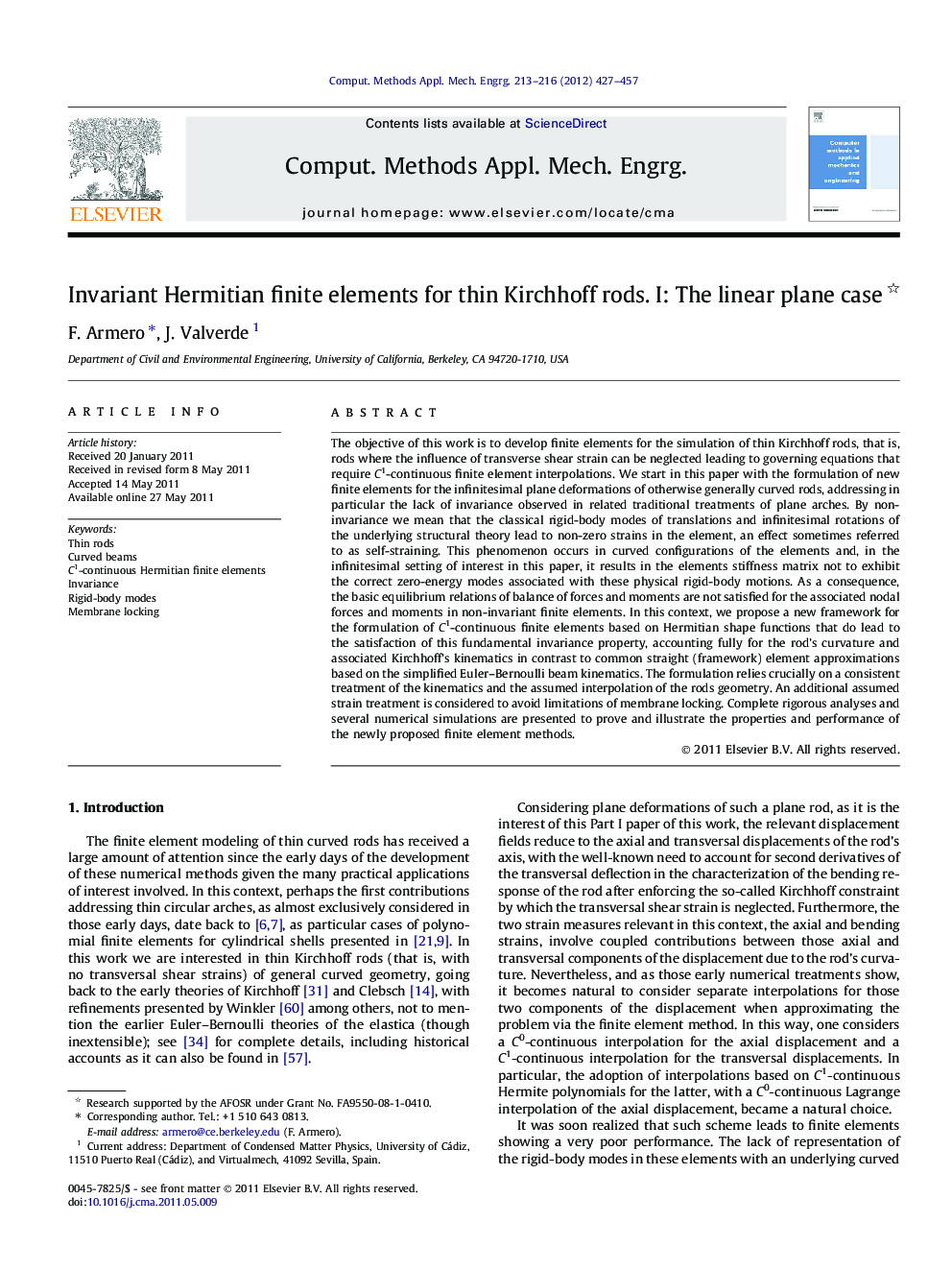| Article ID | Journal | Published Year | Pages | File Type |
|---|---|---|---|---|
| 6918923 | Computer Methods in Applied Mechanics and Engineering | 2012 | 31 Pages |
Abstract
The objective of this work is to develop finite elements for the simulation of thin Kirchhoff rods, that is, rods where the influence of transverse shear strain can be neglected leading to governing equations that require C1-continuous finite element interpolations. We start in this paper with the formulation of new finite elements for the infinitesimal plane deformations of otherwise generally curved rods, addressing in particular the lack of invariance observed in related traditional treatments of plane arches. By non-invariance we mean that the classical rigid-body modes of translations and infinitesimal rotations of the underlying structural theory lead to non-zero strains in the element, an effect sometimes referred to as self-straining. This phenomenon occurs in curved configurations of the elements and, in the infinitesimal setting of interest in this paper, it results in the elements stiffness matrix not to exhibit the correct zero-energy modes associated with these physical rigid-body motions. As a consequence, the basic equilibrium relations of balance of forces and moments are not satisfied for the associated nodal forces and moments in non-invariant finite elements. In this context, we propose a new framework for the formulation of C1-continuous finite elements based on Hermitian shape functions that do lead to the satisfaction of this fundamental invariance property, accounting fully for the rod's curvature and associated Kirchhoff's kinematics in contrast to common straight (framework) element approximations based on the simplified Euler-Bernoulli beam kinematics. The formulation relies crucially on a consistent treatment of the kinematics and the assumed interpolation of the rods geometry. An additional assumed strain treatment is considered to avoid limitations of membrane locking. Complete rigorous analyses and several numerical simulations are presented to prove and illustrate the properties and performance of the newly proposed finite element methods.
Related Topics
Physical Sciences and Engineering
Computer Science
Computer Science Applications
Authors
F. Armero, J. Valverde,
